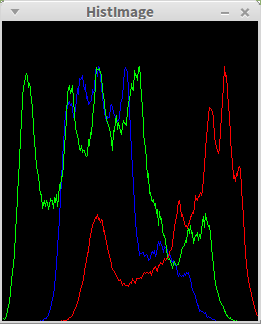Julia-OpenCV binding prototype
NOTE: This project currently is a minimal prototype of Julia-OpenCV binding. It is under development. It is not ready for common use and only work for Linux now.
Introduction
This OpenCV-Julia binding is try to port OpenCV API to Julia. It use the "OpenCV way". The "OpenCV way" means the wrapping will only use the language itself, without 3rd party tools. Like official OpenCV-Python and OpenCV-Julia did.
This binding take OpenCV-Python and OpenCV-Java as reference. It will more like OpenCV-Java. For example, map datatype manually, use Python generation tool to wrap functions.
Goal
The goal of this project is provide an easy to use and Julia style API. Let user could use OpenCV functions in Julia without recompile OpenCV with specific compiler. That's means you can use OpenCV in Julia with offcial binary package, as well as custom build OpenCV.
Update Jan 17th, 2015 Restart the project
How to use it
Run Makefile, compile cv2.h and cv2.cpp to a shared library. Change the image path in test/read.jl. Run "julia read.jl".
Note: Rewriting the build system with CMake. Make the binding could merge to OpenCV CMake build system possible.
Minimal Example -- Calculate histogram
The code of calculating histogram that use OpenCV Julia binding is like this:
include("../src/OpenCV.jl")
img = cv2.imread("/home/sun/workspace/Lena.jpg")
# split image by each channel
images = cv2.split(img)
# make an empty image to draw histogram
histImage = cv2.zeros(300, 256, cv2.matType(img))
# prepare the x coordinate of each bin
bins = reshape(1:256, 256)
#Three color of BGR
color = [ (255,0,0),(0,255,0),(0,0,255) ]
# draw the histogram for each channel by cv.polylines
for i = 1:3
# calculate histogram for each channel
hist = cv2.calcHist([images[i]], [0], [256], [0.0, 255.0])
# an custom function, normarlize the hist value to 0-255
hist = cv2.normarlizeT(hist)
# make the histogram draw in image from down to top
for j = 1:length(hist)
hist[j] = 300 - hist[j]
end
# stack two array by column, I don't know whether there has
# similar function in Julia
pts = cv2.columnStack(bins, hist)
# draw each hist, represent to a polyline
cv2.polylines(histImage, pts, false, color[i])
end
cv2.imshow("HistImage", histImage)
cv2.waitKey(0)
I am sure you can understand the code by reading comments and codes. Here is the output that generated in Julia by the binding:
More information, please see /doc/test_descritopns(Actually, not much for now)
TODO
- Windows support(In progress)
- CMake support
- Basic datatype mapping
- Generation tool
Contact
Any comments or suggestion are highly appreciated! Please send these to Julia-dev mailist, I will see that.
